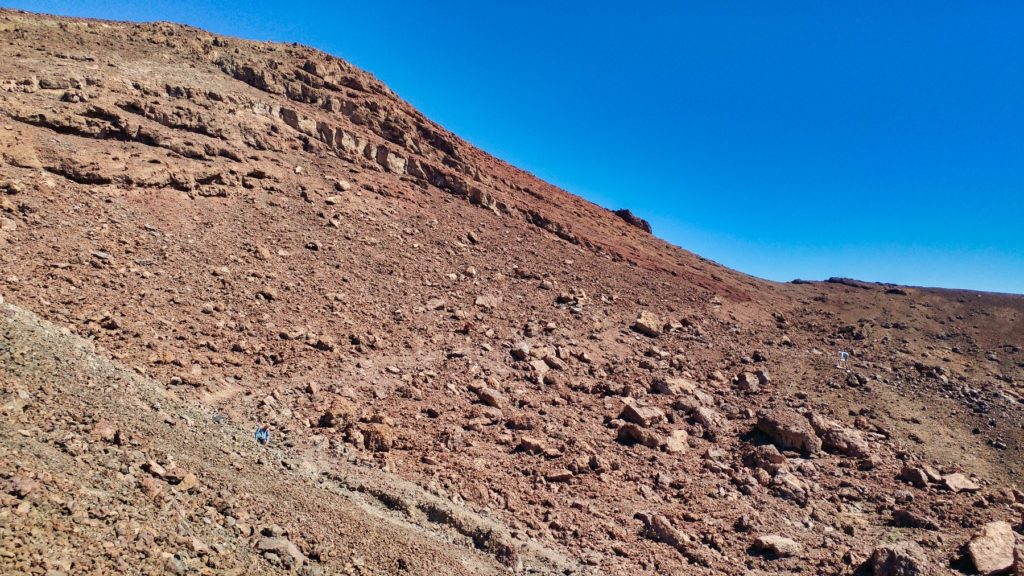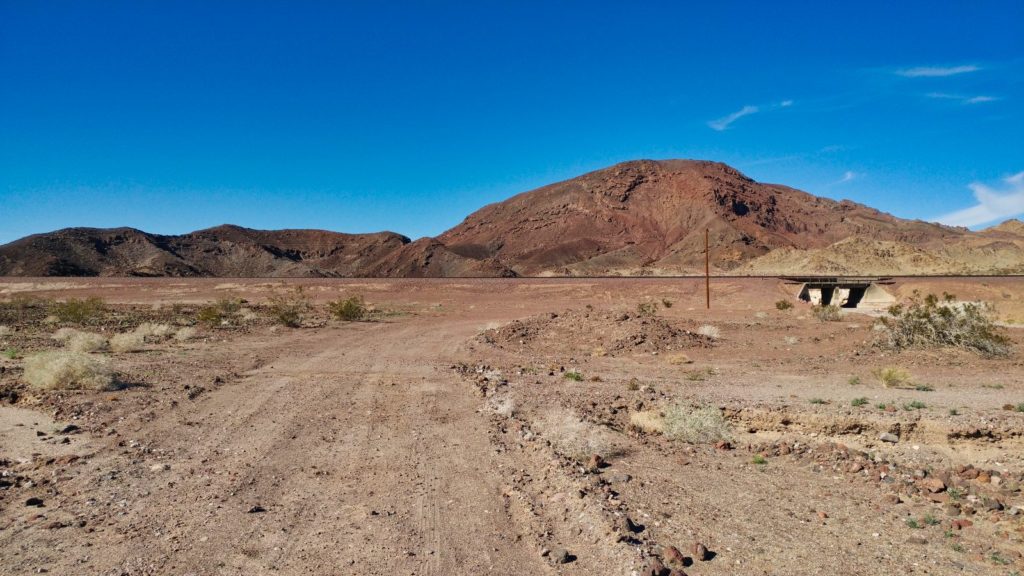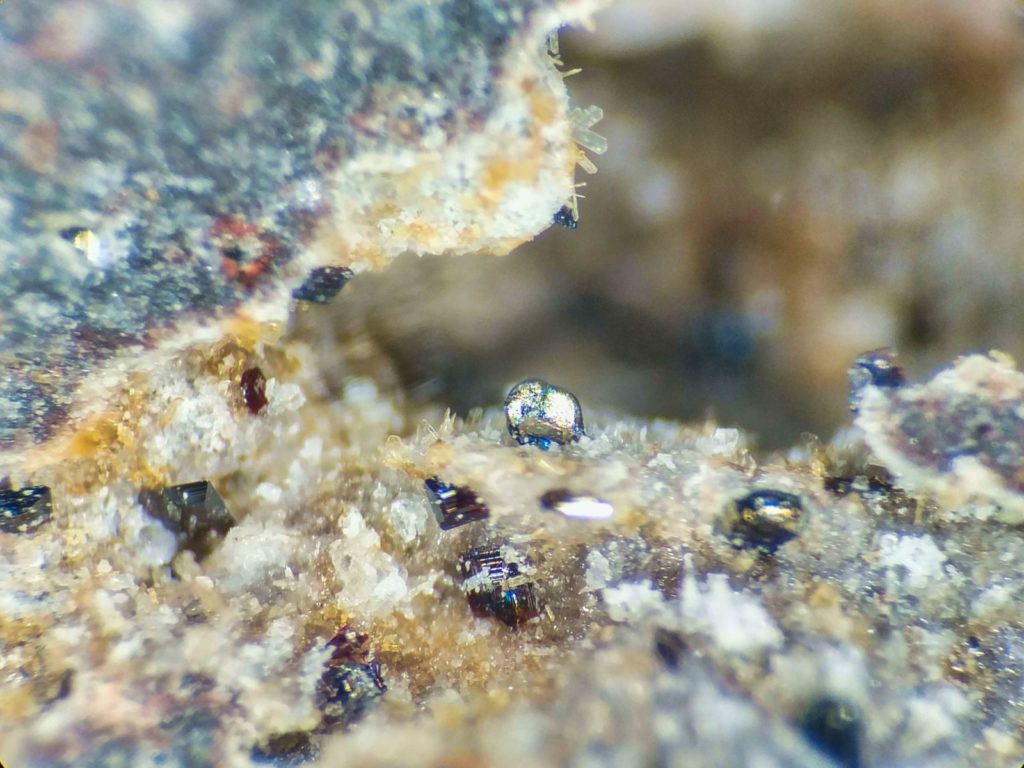We met at 10:00 AM off Route 66. We had to move the cars a few times due to ongoing construction of the new water pipe taking the water from the Cadiz aquifer to Los Angeles.

Despite the changing weather in the coastal areas, the sun quickly warmed up the desert and provided us with a beautiful warm day of collecting what we love the most. It was very chilly in the morning, 28°F in Barstow at 7 AM, but by 11 AM the temperature reached 60° and kept climbing a few more degrees. The air was incredibly clear and the views of the basin were spectacular.

We left for the basanite quarry around 10:15 AM, after waiting for a few more cars to show up and negotiate the dirt road around the big digger trailer. We had 9 cars total for this trip, so the caravan got quite long.
The well-maintained dirt took us under the railroad, then got a little bit rough close to the crater, but everybody got thru with no problems. Some late arrivals joined us at the quarry.

The crater area has excellent large phenocrysts of deep mantle minerals like kaersutite, Ti-bearing augite, titanomagnetite, and forsterite, as well as rare micro zeolites like phillipsite and very rare octahedral faujasite. The cone is very unusual geologically, it’s a very alkaline volcanic rock called basanite. Another very rare alkaline mineral has been identified from there: quintinite from the hydrotalcite group.
Some people collected a lot of very gemmy light green peridots

All that is left of the volcanic rock quarry is a few timbers now, but that particular area has a lot of rocks with micro minerals.

When everybody got their buckets and backpacks filled with rocks we went back to the parking area and tried to identify the specimens. Many nice euhedral amphiboles and pyroxenes were found during the day.
The craters looked a little bit disappointed that we are leaving but we promised to return one day.

During the microscopic follow-up work on the fieldtrip material, I’ve verified nice crystals of phillipsite and faujasite. Flattened six-sided disks of dolomite were seen in the volcanic vesicles as well. No quintinite was observed this time.
However, I’ve found some minerals that were not reported from the location before. They have been verified on Raman spectrometer with Bob Housley’s help in the Caltech mineralogy lab led by George Rossman. One of the rocks from the quarry area had vesicles containing beautiful dark red translucent square pseudobrookite and sharp euhedral black grains of hematite with blue iridescence, they are reported here for the first time. They were associated with straw-colored transparent blades of enstatite group mineral.

Also during the microscopic examination, several very small blue dots were found on phillipsite. they were identified as woodwardite, a very rare copper aluminum sulfate, another member of the hydrotalcite group. Here is the picture showing blue euhedral crystals 15μm (15/1000 of a millimeter) in size, as seen in the Raman spectrometer at Caltech.

Thank you all for coming and see you next time!
MarekC